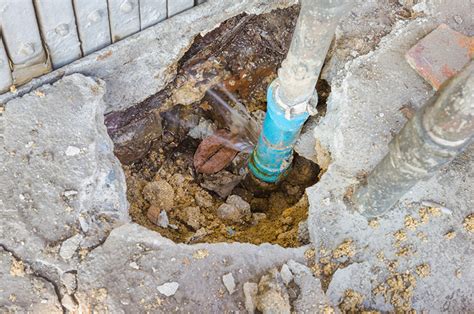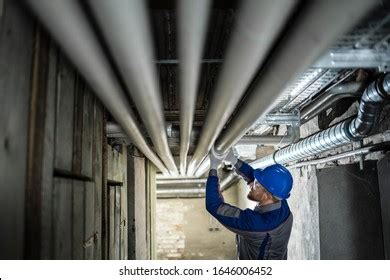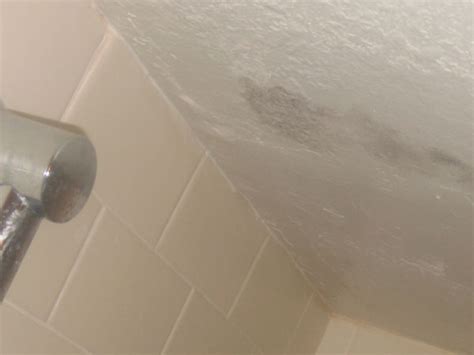Water Leak

Water leaks are a common yet often overlooked issue in households and commercial spaces, but their potential consequences should not be underestimated. From hidden pipe bursts to slow drips, these leaks can lead to significant property damage, increased utility costs, and even health risks. Understanding the causes, signs, and solutions is crucial for effective leak prevention and management.
The Silent Threat: Understanding Water Leaks

Water leaks are more than just a nuisance; they are a silent threat that can escalate into major problems if left unaddressed. These leaks can arise from various sources, including aging pipes, faulty fixtures, or even natural disasters like earthquakes or floods. The consequences of water leaks are wide-ranging and can affect every aspect of your property and daily life.
Consequences of Water Leaks
The impact of water leaks extends beyond the immediate area of the leak. Here are some key consequences to consider:
- Property Damage: Leaks can cause significant structural damage to your property. Over time, water seepage can weaken foundations, warp wooden floors and furniture, and cause mold and mildew growth, which can compromise the integrity and aesthetics of your home.
- Health Risks: Moisture from leaks provides an ideal environment for mold and bacteria to thrive. These microorganisms can lead to respiratory issues, allergies, and other health problems, especially for those with compromised immune systems.
- Financial Loss: Beyond the cost of repairs, water leaks can lead to increased insurance premiums and potential legal issues if left undetected and result in substantial financial burdens.
- Utility Costs: Leaks waste water, leading to higher utility bills. Even small, undetected leaks can waste hundreds of gallons of water annually, translating to unnecessary expenses.
- Environmental Impact: Water is a precious resource, and leaks contribute to its unnecessary wastage. By addressing leaks promptly, you can play a part in conserving water and reducing your environmental footprint.
Common Causes of Water Leaks
Identifying the root cause of a water leak is crucial for effective resolution. Here are some of the most prevalent causes:
- Aging Plumbing: Over time, pipes can corrode, joints can weaken, and fittings can deteriorate, leading to leaks. This is especially common in older buildings where the plumbing infrastructure may not meet modern standards.
- Clogged Drains and Pipes: Blockages in pipes and drains can cause water to back up and leak, especially if the clog is severe.
- Damaged or Faulty Fixtures: Faulty faucets, showerheads, toilets, and other fixtures can develop leaks over time due to wear and tear or manufacturing defects.
- Natural Disasters: Earthquakes, floods, and other natural disasters can cause pipes to rupture or become misaligned, leading to leaks.
- External Factors: Tree roots growing into pipes, shifting soil, or extreme weather conditions can also damage pipes and cause leaks.
Identifying Water Leaks
Detecting water leaks early can help mitigate potential damage and costs. Here are some signs to watch out for:
- Unusual Water Bills: If your water bill suddenly spikes without any noticeable increase in water usage, it could indicate a hidden leak.
- Visible Water Damage: Look for water stains, discolored walls or ceilings, peeling paint, or warped floors. These are often signs of a leak that has been present for some time.
- Musty Odors: A persistent musty smell, especially in areas like basements or under sinks, can indicate the presence of moisture and potential mold growth.
- Water Sounds: Listen for the sound of running water when all taps are turned off. This could be a sign of a leak, especially if the sound is persistent.
- Moisture on Pipes: Condensation on pipes, especially in colder months, may indicate a leak. Excess moisture can lead to corrosion and further damage.
- Wet Spots in the Yard: If you notice unusually wet spots in your yard or garden, especially if they persist even in dry weather, it could be a sign of an underground leak.
Prevention and Solutions

Preventing water leaks and knowing how to address them promptly can save you significant time, money, and stress. Here are some strategies to consider:
Regular Maintenance and Inspections
Preventive maintenance is key to leak prevention. Regularly inspect your plumbing system, including pipes, fixtures, and appliances. Look for signs of wear and tear, corrosion, or leaks. Consider scheduling annual or bi-annual professional inspections to identify potential issues before they become major problems.
Upgrade Old Plumbing
If your home has aging plumbing, consider upgrading to modern, leak-resistant materials. Modern pipes and fittings are often more durable and resistant to corrosion, reducing the likelihood of leaks.
Use Water-Saving Fixtures
Installing water-efficient fixtures, such as low-flow showerheads and faucets, not only helps conserve water but can also reduce the strain on your plumbing system, making leaks less likely.
Install Leak Detection Systems
Advanced leak detection systems can monitor your water usage and alert you to any unusual patterns or signs of leaks. These systems can be especially beneficial for detecting hidden leaks early on.
Quick Response to Leaks
If you discover a leak, act promptly. Even a small leak can cause significant damage over time. Turn off the water supply to the affected area and contact a professional plumber to assess and repair the leak.
Educate Occupants
Whether it’s your family, tenants, or employees, educate them on the signs of water leaks and the importance of prompt reporting. Encouraging a culture of water conservation and leak awareness can help prevent potential disasters.
The Future of Leak Prevention
As technology advances, the future of leak prevention looks promising. Smart home systems and IoT (Internet of Things) devices are revolutionizing the way we monitor and manage our water usage. These systems can detect leaks in real-time, send alerts, and even automatically shut off water supplies to prevent further damage.
Additionally, advancements in plumbing materials and techniques are making pipes more durable and leak-resistant. From self-healing pipes to innovative joint systems, the plumbing industry is continuously innovating to reduce the occurrence of leaks.
| Water Leak Fact | Impact |
|---|---|
| A single leaky faucet can waste up to 3,000 gallons of water per year. | This equates to a significant financial loss and unnecessary water wastage. |
| Undetected leaks can lead to structural damage over time. | This can result in costly repairs and potential safety hazards. |
| Leak detection systems can reduce water waste by up to 15%. | These systems offer an effective solution for early leak detection and prevention. |

FAQs
How often should I inspect my plumbing for leaks?
+It’s recommended to conduct a thorough plumbing inspection at least once a year, especially in older homes or buildings. Regular visual checks for signs of leaks can also be beneficial.
Can I fix a leak myself, or should I call a professional plumber?
+While some minor leaks can be fixed with basic DIY skills, it’s always best to consult a professional plumber, especially for more complex issues. Plumbers have the expertise and tools to diagnose and repair leaks effectively.
What are the signs of a hidden water leak?
+Hidden leaks often manifest as unexplained spikes in water bills, persistent musty odors, or signs of water damage like peeling paint or warped floors. These leaks can be difficult to detect without professional equipment.
How can I conserve water and reduce the risk of leaks?
+Implementing water-saving practices like fixing leaky faucets promptly, installing low-flow fixtures, and being mindful of water usage can help conserve water and reduce the strain on your plumbing system.
What should I do if I suspect a water leak but can’t locate the source?
+If you suspect a leak but can’t identify the source, it’s best to call a professional plumber. They have the tools and expertise to locate and repair hidden leaks efficiently.



